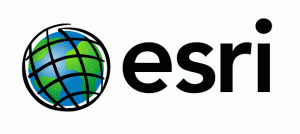Esri knows that government is always looking for ways to create better public service. By using smart, responsive tools, local governments are more effectively performing everyday tasks for their citizens.
Applied geography through Esri’s ArcGIS platform has proven to help governments create smart communities. With the utilization of all ArcGIS has to offer, cities and towns across the country have seen increased revenue, collaboration, accuracy, and better managed resources.
During GovLoop’s May 21 online training, Become A Smart Community Using Tools You Have, But Probably Don’t Know About, Esri’s Director of Government Markets, Christopher Thomas, and Hub Program Manager, Brenda Wolfe, demonstrated how geospatial technology enhances efficiency across the public sector.
One of Esri’s greatest success stories is in King County, Washington. Workers were able to implement location platforms in over 42 agencies through custom GIS applications. Geospatial technology provided context and content to programs so that workers could anticipate situations before they became problems. Since 1992, GIS has enabled King County to quantify benefits and see a real return on investment. Between 1992 and 2010, the community saw net benefits of up to $1.7 billion.
You can do it, too.
Any community can be a smart community. It is all about leveraging available technology to help reach your goals. ArcGIS as a platform delivers GIS with three key elements: a geo-centric model, location aware, and application based. Developers are able to use GIS to enhance any program while those on the ground can access real time data anytime, anywhere, from any device.
Central to the ArcGIS platform is open data. Local governments are able to optimize GIS to get crucial data out to citizens. In Minneapolis, citizens can access public GIS maps and non-spatial data free of charge, with minimal licensing. Users browse through layers of graphs and maps on topics like environment, city assets, and safety incidents within their community. They can then filter and download whatever is most applicable to them.
Wolfe went on to describe how state and local governments are taking advantage of ready-to-use apps and maps through ArcGIS. These localities are monitoring everything from water utilities, fire service, public works, planning and development, to law enforcement across all devices. Wolfe also provided a series of case studies that prove how GIS is continuously evolving to help government workers provide the best public service possible.
Here’s how you do it:
Thomas and Wolfe left us with four steps to create a successful strategy that supports a smart community:
- Start with ArcGIS as a platform that has access to a tremendous amount of capabilities.
- Build a location strategy. Consider where the highest needs are in your community and where GIS can add the most value. Esri is even available to help build an action plan for implementing applications.
- Take advantage of apps that really deliver value. GIS can provide real solutions that serve the government’s highest priorities.
- Go even farther and utilize Esri partners that are also helping governments build smarter communities. Building lasting relationships is key to generating the best services.
Interested in training on how to best utilize ArcGIS? Esri is committed to seeing your project become a success. Through their online support platform, Massive Open Online Training (MOOT), over 50,000 people have learned best practices while creating their own maps to enhance policy in their agencies. Additionally, Esri’s take home program offers unlimited access to all software for online training for just $100 a year. There is no other comprehensive GIS training program for such a price.
Be sure to listen to the whole online training here to get all the information on how to make your community a smart one.






Leave a Reply
You must be logged in to post a comment.